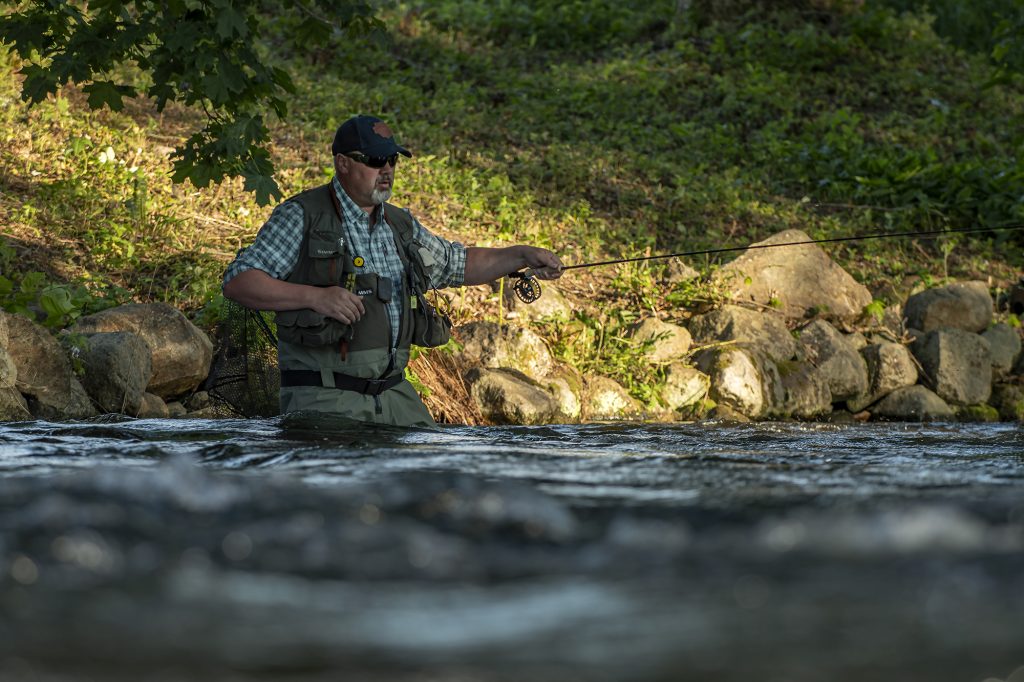
Stoneflies are truly fascinating insects. The fully developed form as we know it today is up to 250 million years old. They are widely distributed and unless you’re fishing on Antartica, it’s likely that there are stoneflies in a river near you. There are over 3000 species registered across globe and they come on all sizes. Some of them are huge, some are very small. If you happen to be an insect nerd and enjoy chasing small critters and can’t wait for the season to get started, there’s actually a lovely small stonefly, Capnia bifrons, that hatches while there’s still snow on the banks.

The massive stonefly hatches from the US, especially Montana, are well known. I’ve seen the shucks from them and it’s no wonder that they can bring even the biggest trout to the surface. Depending on where you live, stonefly imitations can be a must-to-have in the box or a nice-to-have. In Montana I’d say must have, in Scandinavia, nice-to-have. In Scandinavia we do have a quite a few species and they hatch across most of the season, but they rarely enough for them alone to bring the fish to the surface.
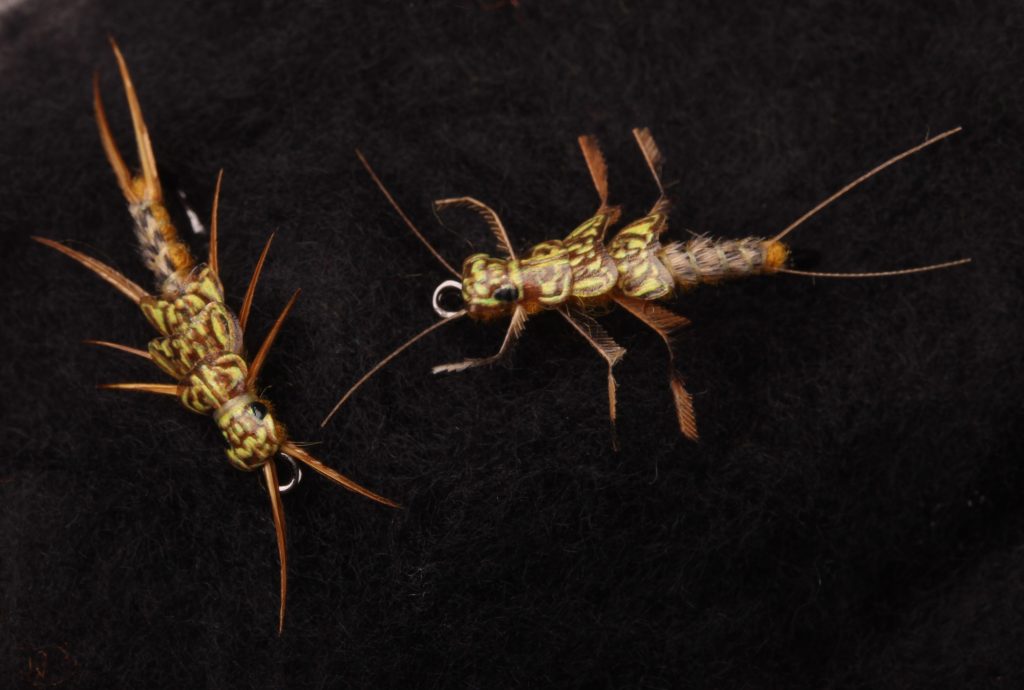
In late March and April when the Large Dark Olive hatches, the Taeniopteryx nebulosa also hatches and you’ll see the odd one picked off the surface. The same fish would most like eat an LDO-imitation, but a few February Red imitations might save the day,
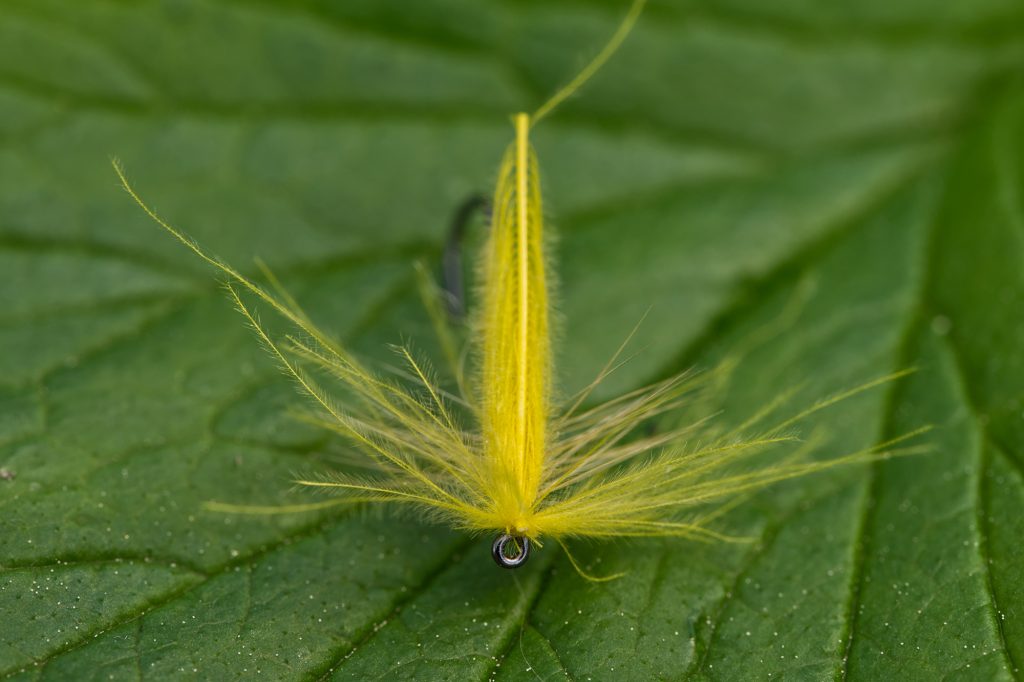
Later in the season (as in now) another lovely stonefly appears. The Yellow Sally (Isoperla grammatica) is a beautiful, medium sized stonefly and like it’s contemporary mayfly, yellow. It too never beings fish to the surface and as with the February Red, it’s fun to catch a fish on the imitation, even if the same fish would take say a Yellow May Dun imitation. I’ve certainly seen them eaten, but I’ve never seen fish keyed in on them to the exclusion of other insects. Who knows? One day those four Yellow Sally imitations might make the difference.
As with most imitations, less can do it, but the Pro Sportfisher Trout System makes it fairly easy to tie an life like stonefly nymph imitation. Håkan Karsnäser have made the following step-by-step of the Isoperla nymph.

The completed nymph.

Isoperla Nymph
Hook: Ahrex FW530/531, size 12-14.
Thread: 8/0, Light Yellow.
Tail: Brown biots.
Abdomen: Superfine dubbing with woodduck back.
Rib: The tying thread.
Wingcases: Pro Sportfisher Stonefly Back, size S.
Thorax: Superfine dubbing Amber
Legs and antennae: Brown biots
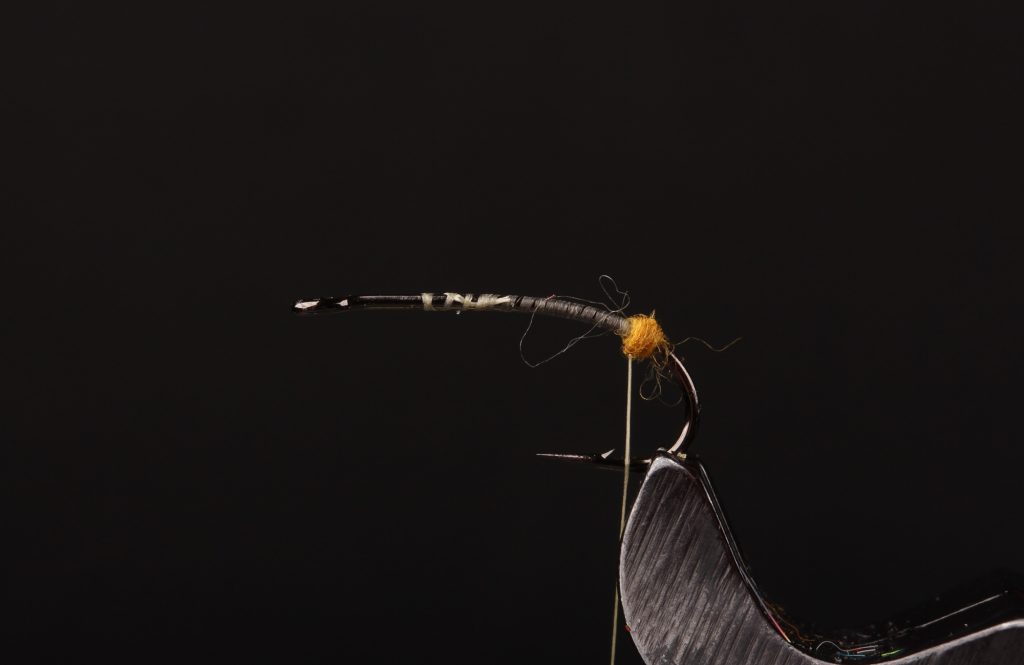
Fasten the thread and wind it down into the hook bend. Make a small ball of dubbing.

Tie in one biot on each side of the dubbing ball, splaying them out to both sides.

Make a loop of the tying thread.
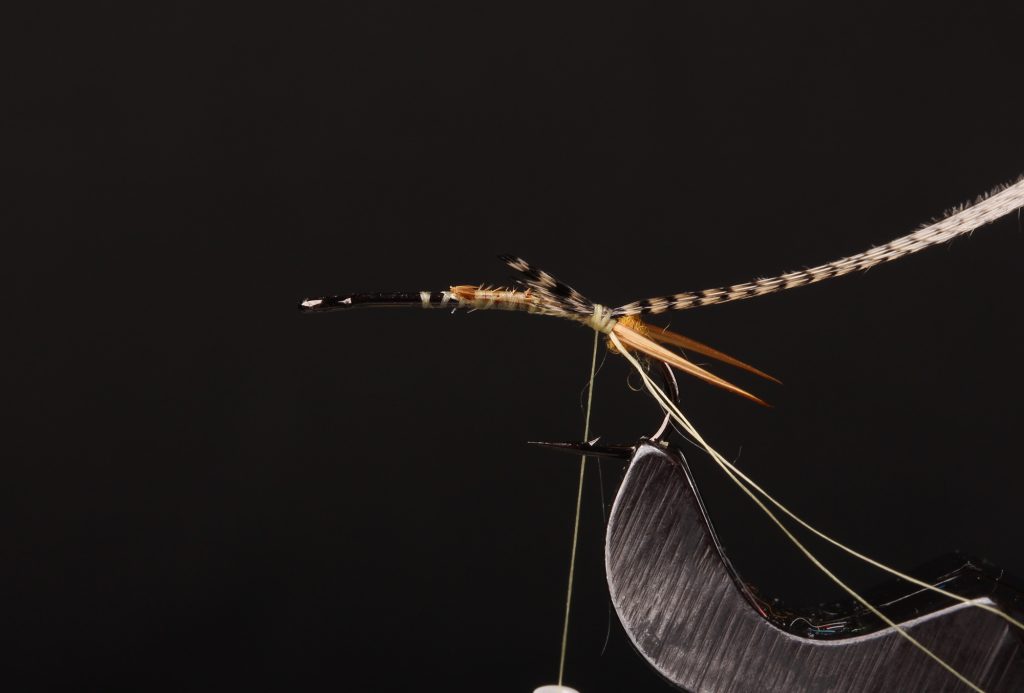
Tie in a small bunch of woodduck fibers by the tips.

Make a tapered body with the dubbing to just past the middle of the hook shank.
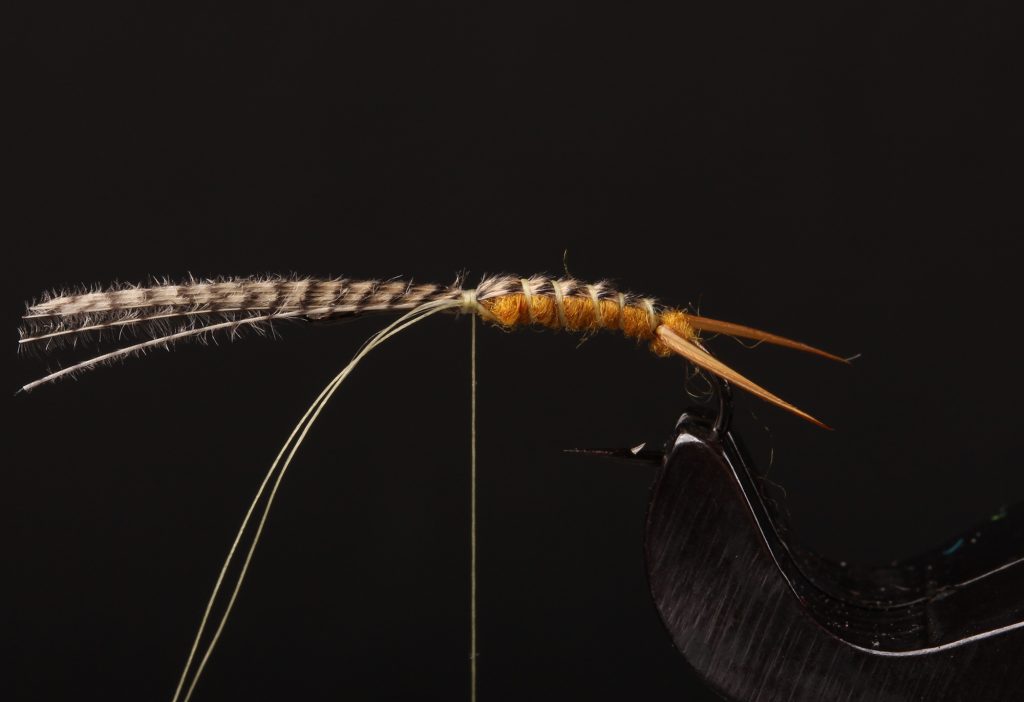
Fold the woodduck fibres forwards and tie down. Twist the thread loop and rib the abdomen.

Tie in one biot on each side of the body for the first pair og legs.

The Pro Sportfisher Stonefly Backs are divided into the three sections. For ease of use, they are numbered, so you don’t tie them in in the wrong order.

Tie on no. 1 over the abdomen.

Dub the thread and forwards creating the next section of the thorax. Use section no. 1 to judge the length of this section. Tie in another set of biots.

Tie in section no. 2 so it covers the dubbed section behind it.
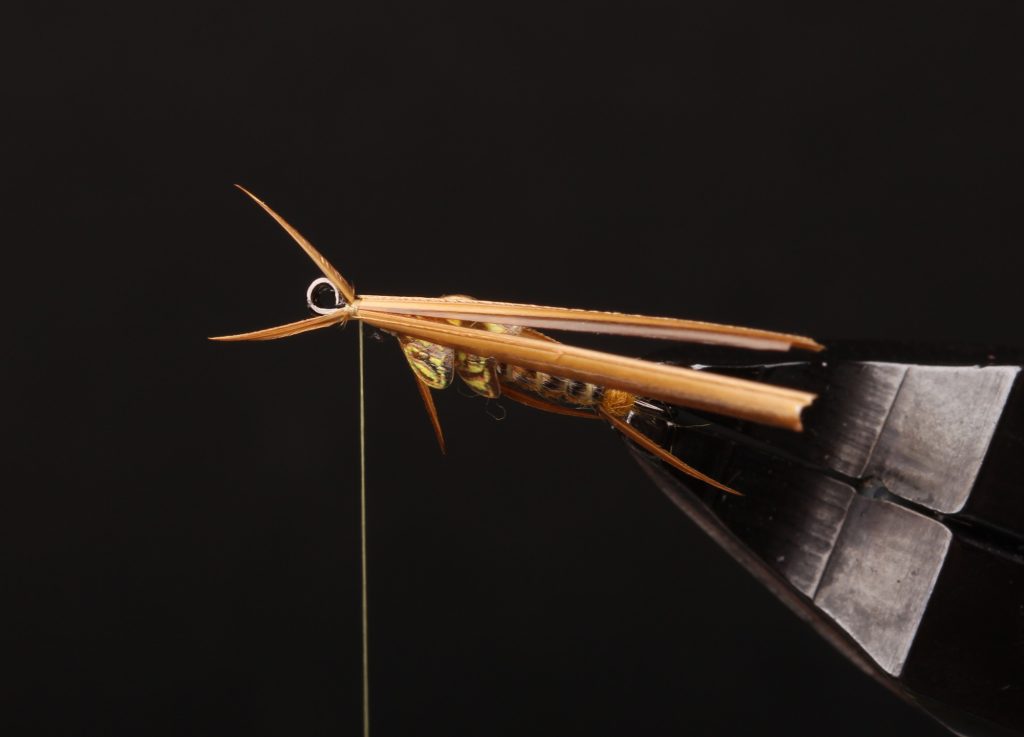
Tie the thread forwards to just behind the eye of the hook. Tie in two biots as antennae.

Tie down stonefly back no. 3, this time with the underside facing up and pointing over the hook eye.
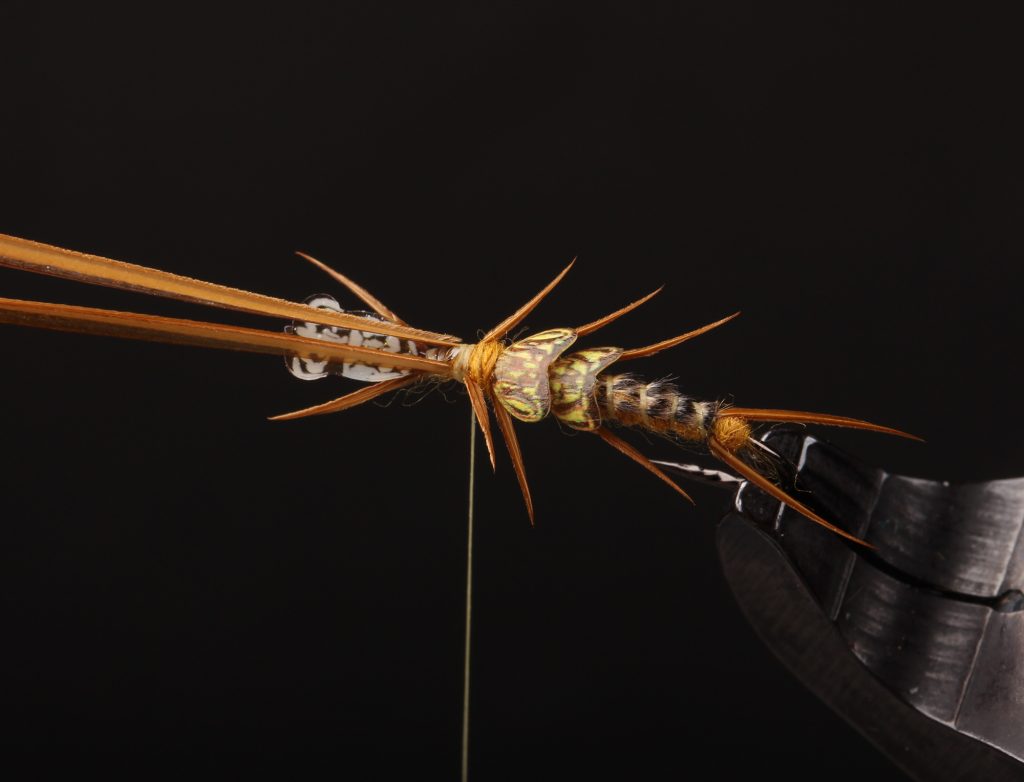
Dub another small section in front of stonefly back no. 2 and tie on a set of biot legs just in front of it.arje sida.

Make another section of dubbing and cover the hook all the way to the hook eye.
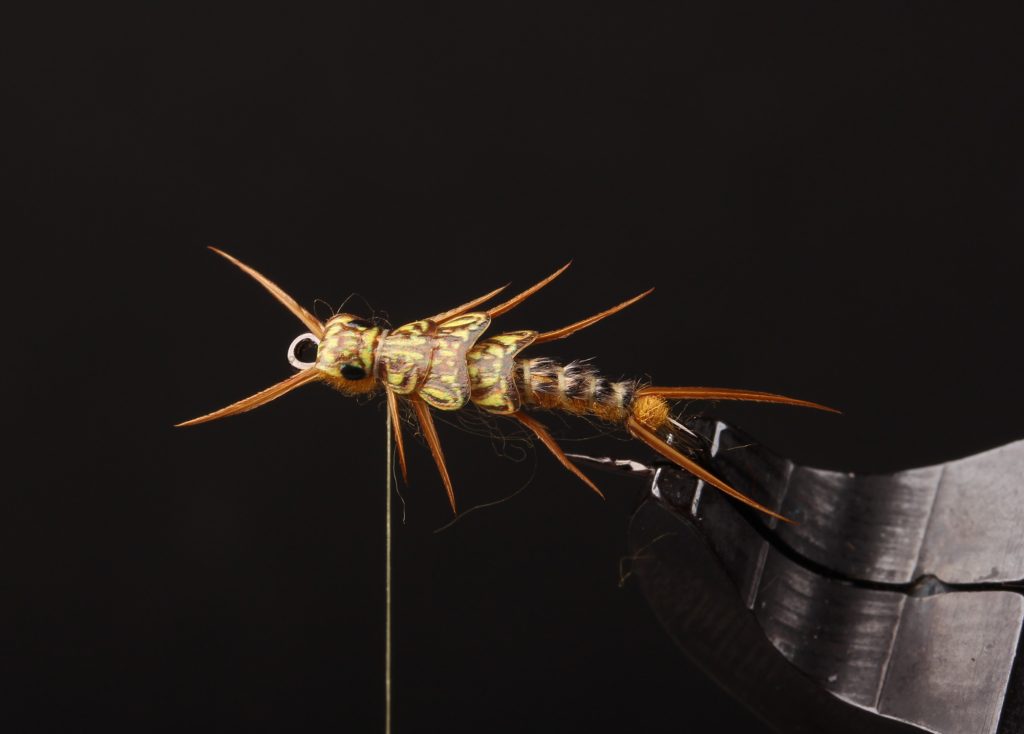
Fold back the stonefly back and tie down behind the eyes. A whip finish and a drop of varnish finishes the fly.

Hen hackles are a good alternative to the biots for imitating the legs, tail and antennae.

Take six hen hackles in different lengths and strip the fibres from one side of the hackles on three of them. Do the same on the other three, but strip the opposite side. Trim the remaining fibers using a sharp scissors. Try and make a small taper.
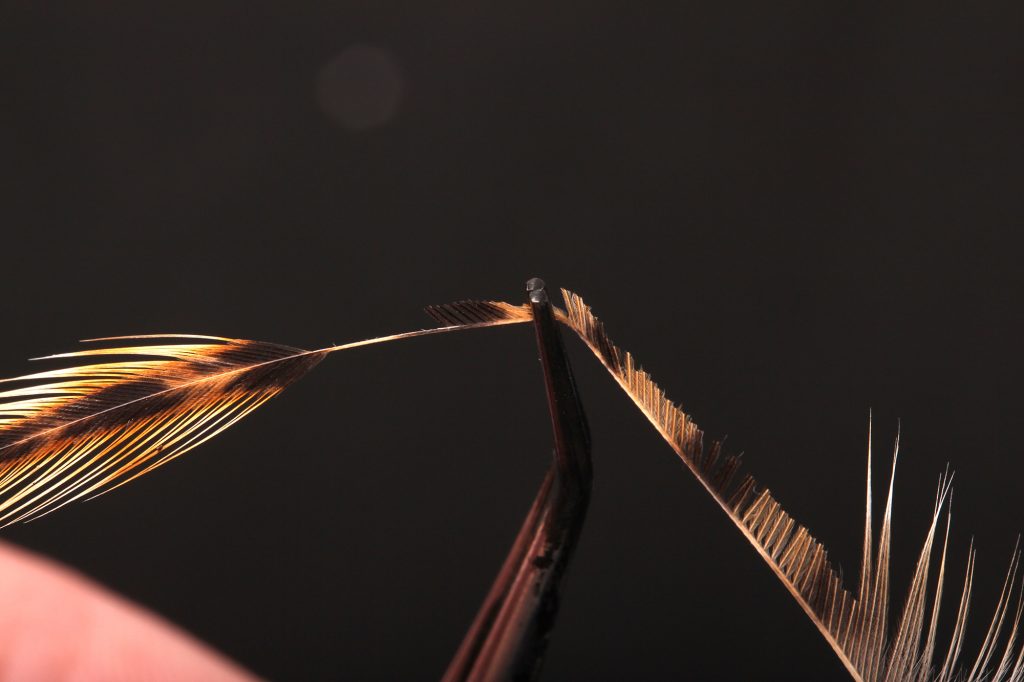
When the legs are tie in, carefully heat a pair of tweezers and bend the hackle, creating a knee. Be careful not to heat the tweezers too much.
